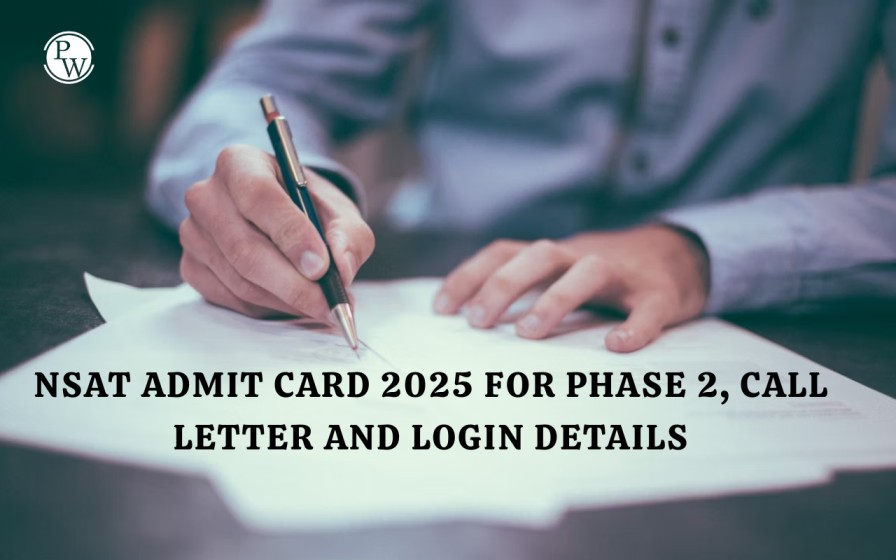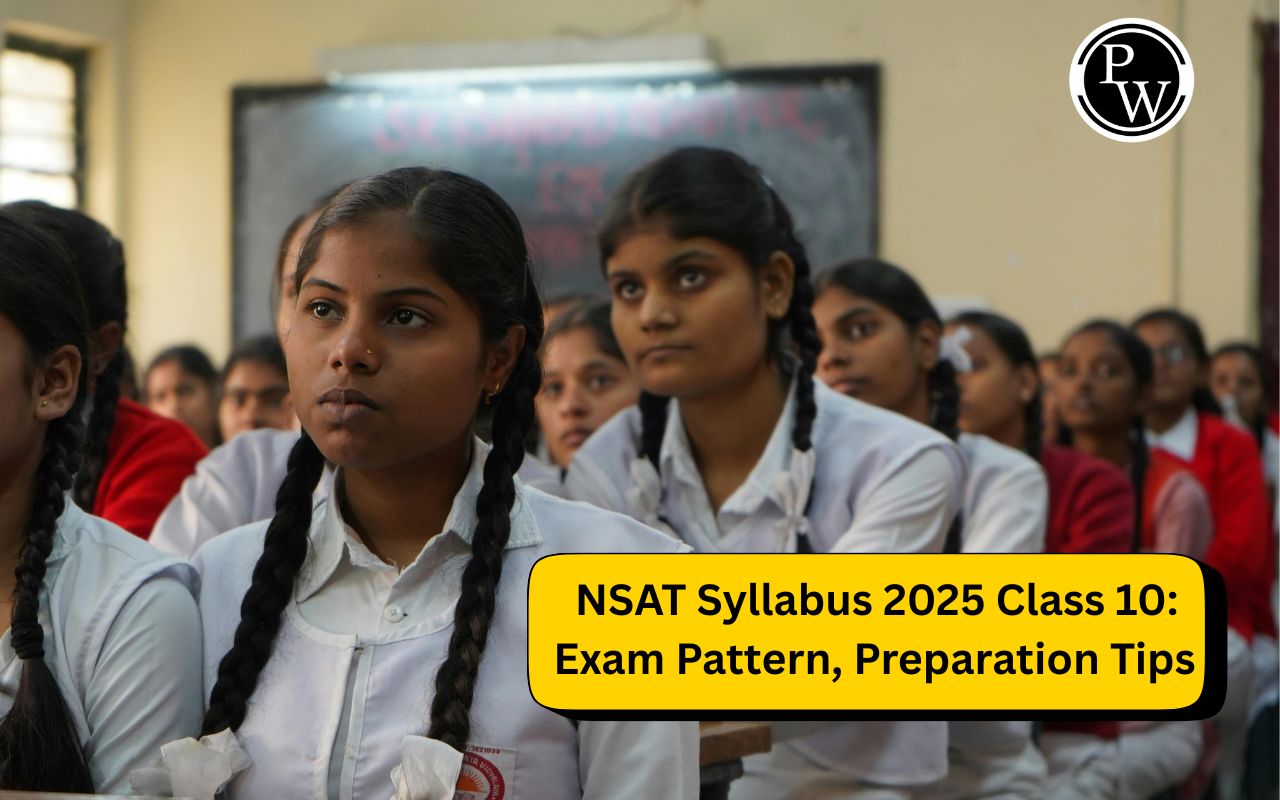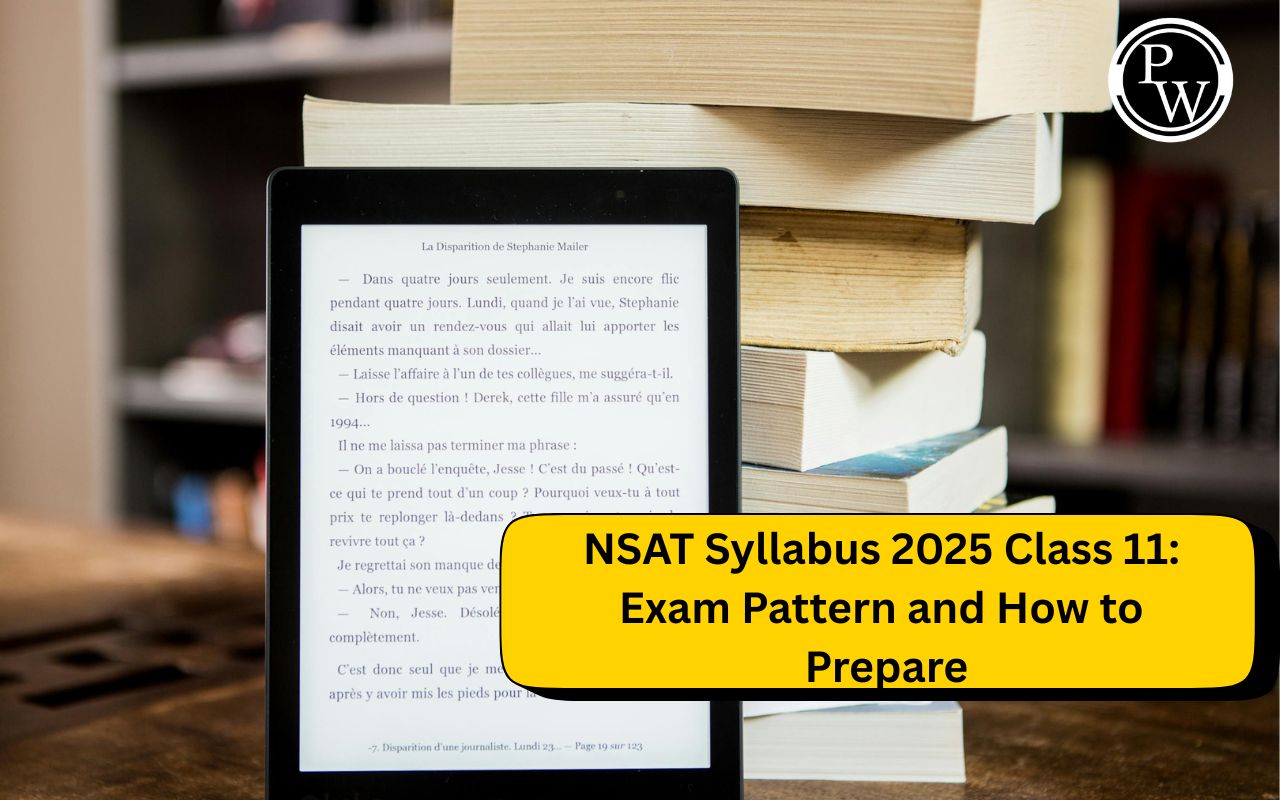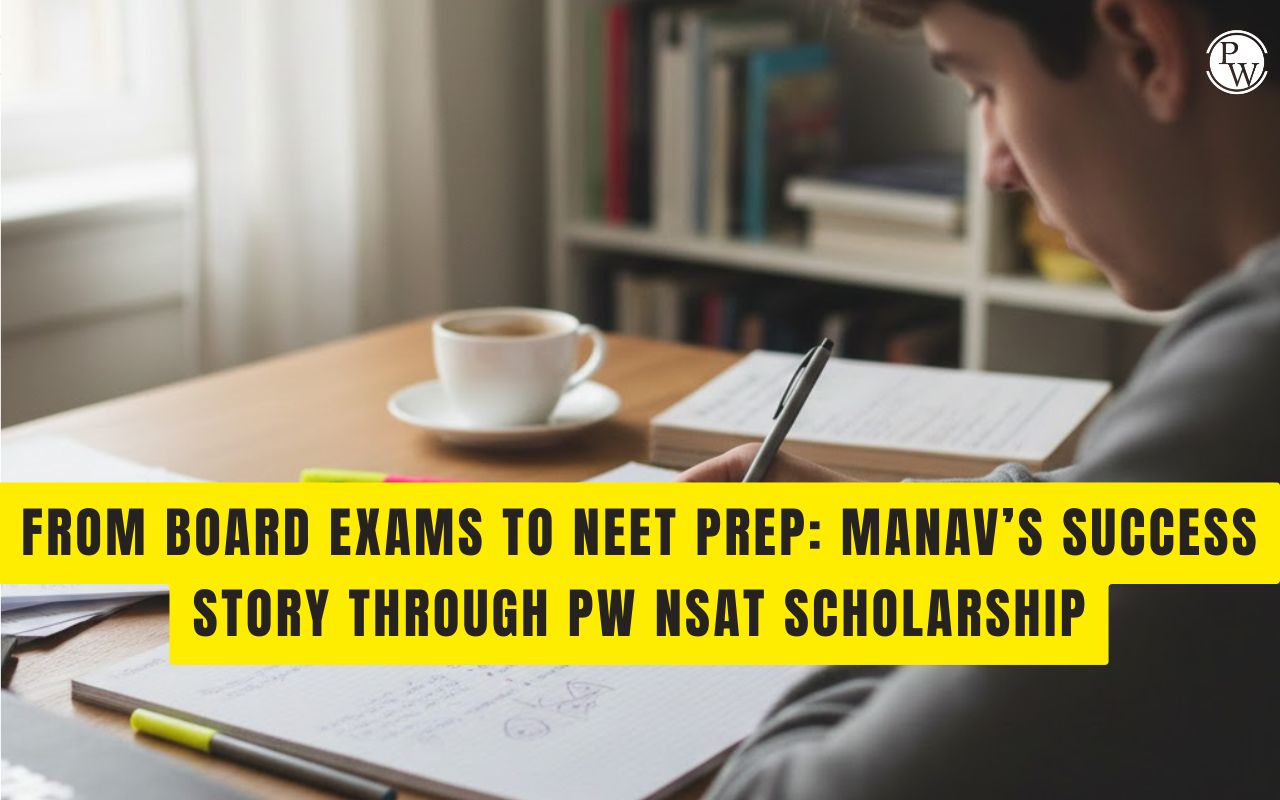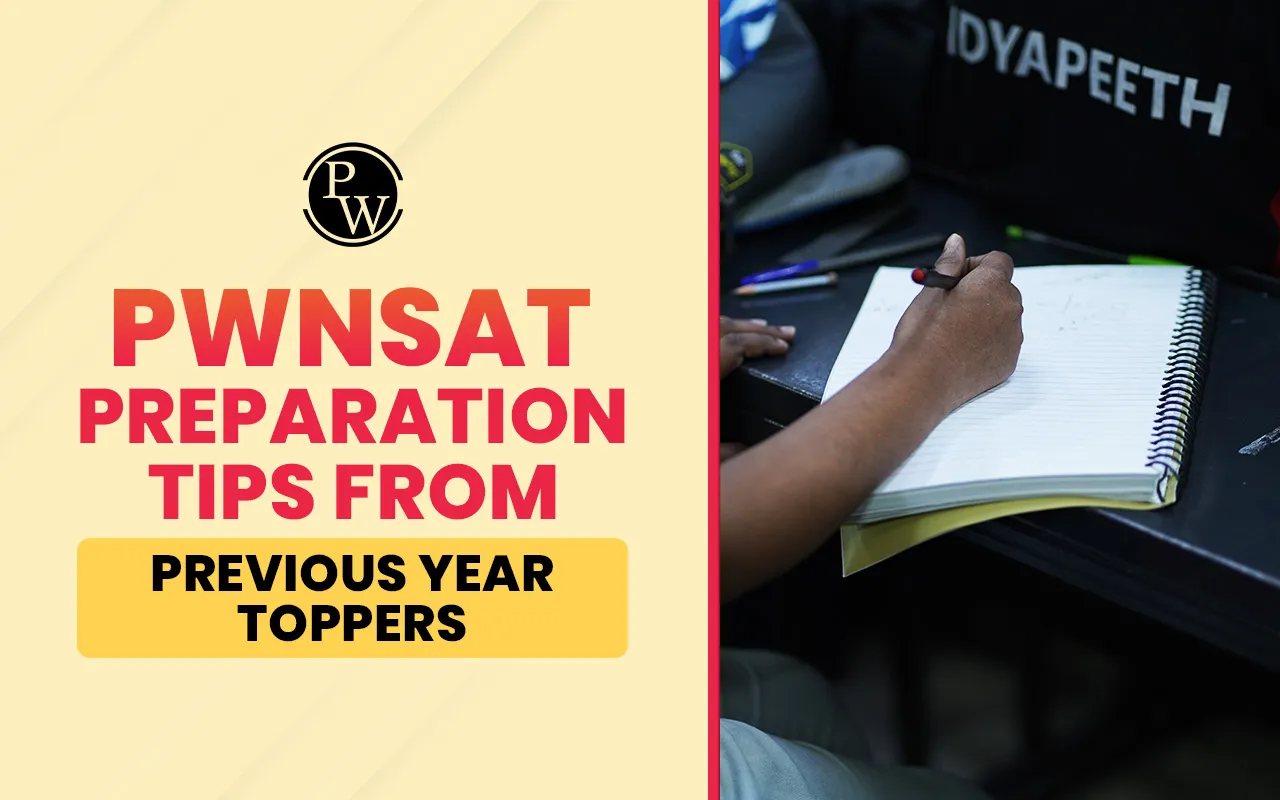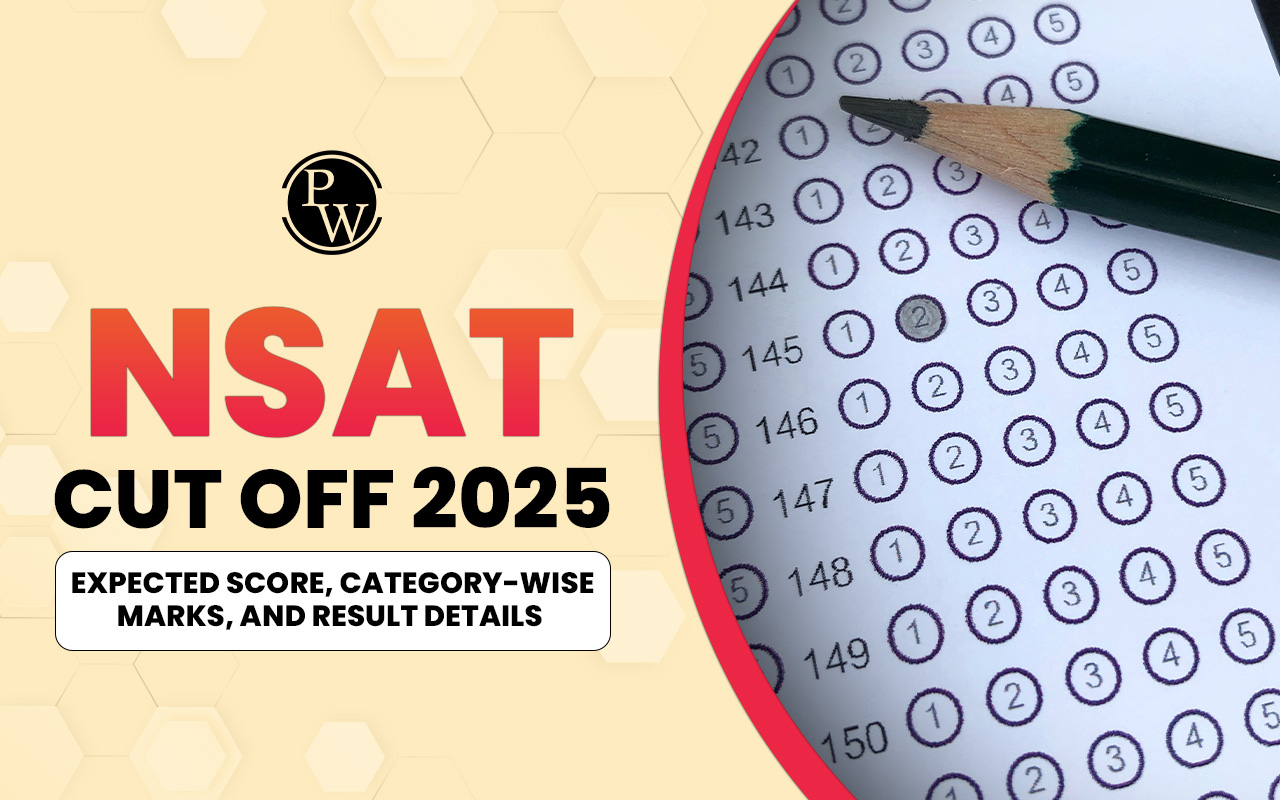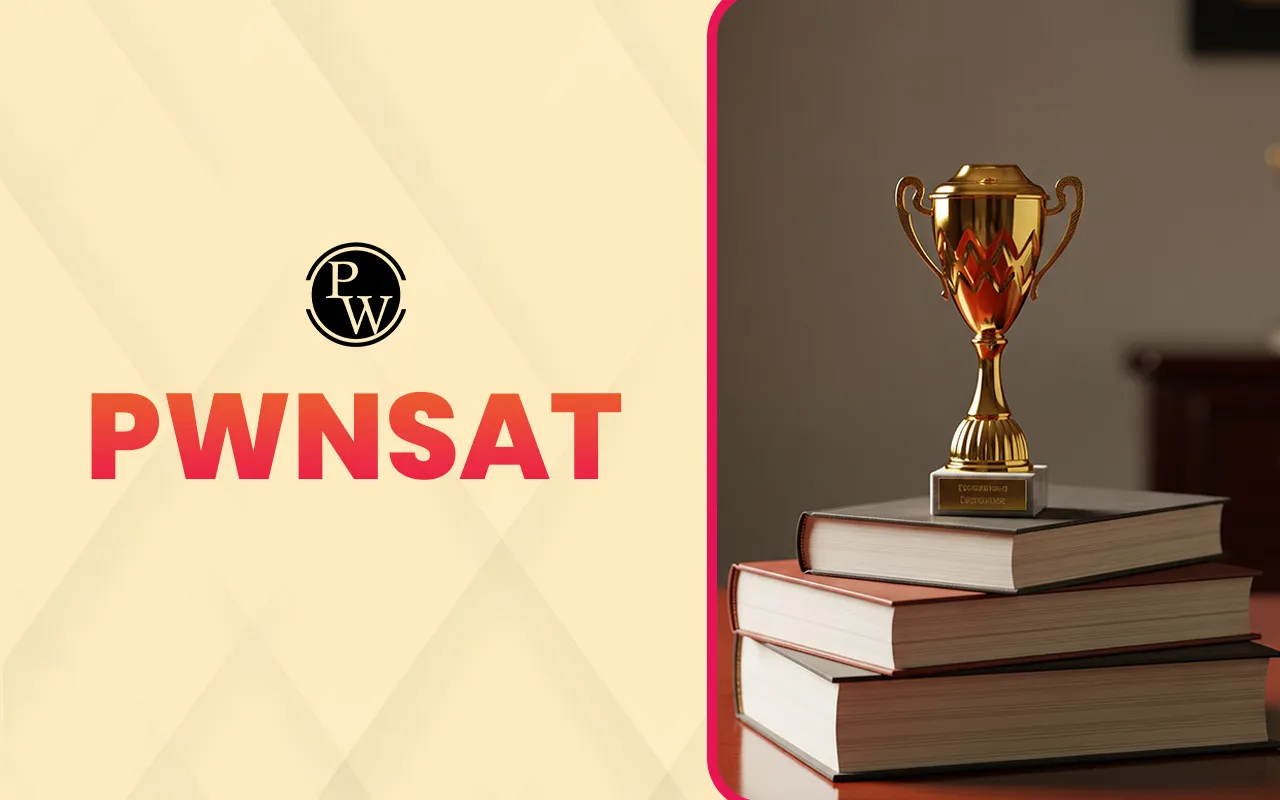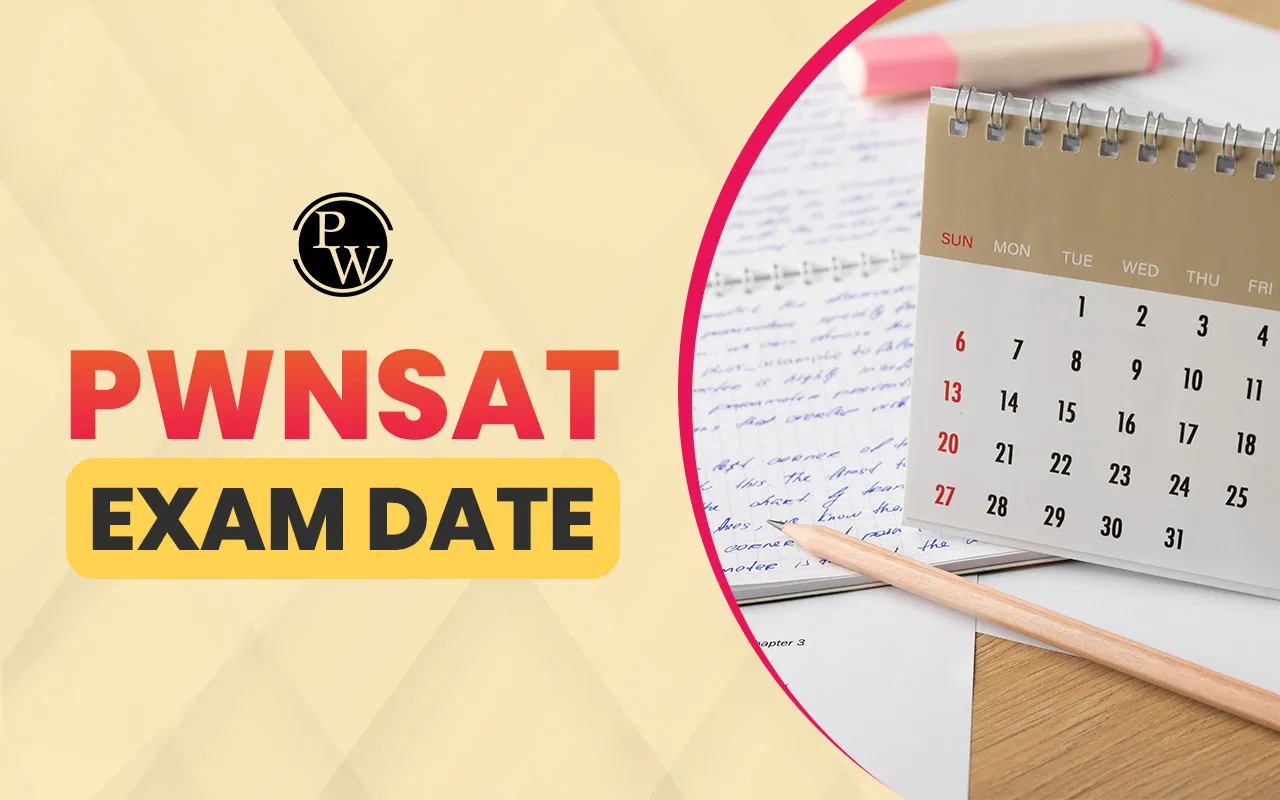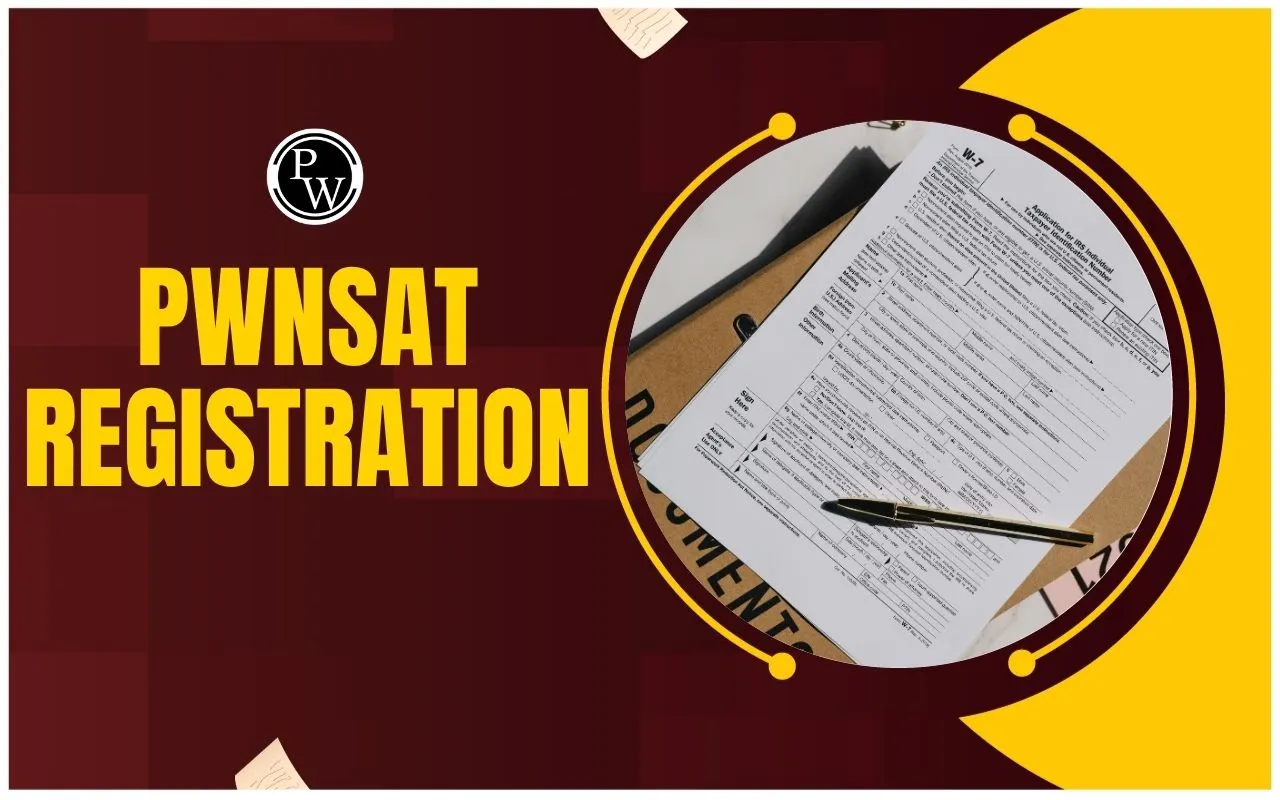
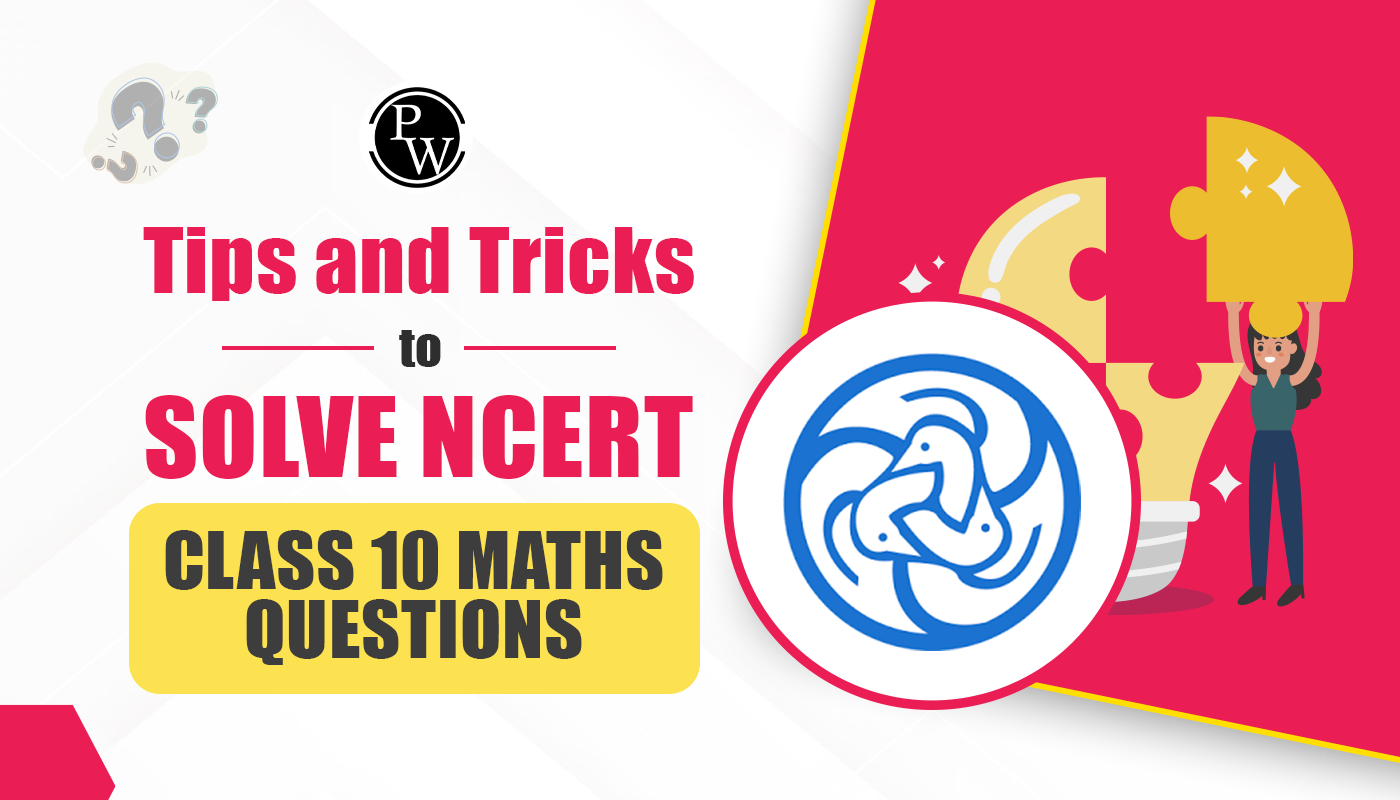
Class 10 is a pivotal year in a student's life, with the pressure of board exams looming large. Mathematics, being one of the core subjects, often stirs anxiety among students. However, mastering this subject can become a lot easier if you know the right strategies to tackle the NCERT Class 10 Maths Questions.
This article aims to provide you with effective tips and tricks to help you excel in your maths exam. So, let’s dive into these strategies and set you on the path to success!Importance of Solving NCERT Class 10 Maths Questions
The NCERT Class 10 Maths Questions form the backbone of your board exam preparation. These questions are designed to build a strong conceptual foundation, ensuring that you have a clear understanding of fundamental mathematical principles. By solving these questions diligently, you not only reinforce what you've learned but also gain confidence in tackling a variety of problems. Additionally, many board exam questions are directly based on or are similar to NCERT problems, making it imperative to solve these thoroughly. Regular practice of these questions helps you manage your time effectively during the exam and boosts your problem-solving skills, paving the way for outstanding performance.Chapter-Wise Tips to Solve NCERT Class 10 Maths Questions
The following are the chapter-wise tips to solve NCERT Class 10 Maths Questions:1. Real Numbers
Real Numbers is the first chapter in your NCERT Class 10 Maths textbook, and it lays the groundwork for several other concepts. Begin by understanding Euclid’s Division Lemma, Fundamental Theorem of Arithmetic, and concepts related to irrational numbers. Practice questions involving HCF and LCM extensively. A trick to remember is to break down larger problems into smaller steps, which makes solving easier. Focus on proving theorems step-by-step as they form the basis of many exam questions.Also Check: CBSE Class 10 Science Preparation Strategies
2. Polynomials
Polynomials is another crucial chapter. Start by revising the types of polynomials—linear, quadratic, and cubic—and their degrees. Practice finding zeros of polynomials using the factorization method and the quadratic formula. Remember, the relationship between the coefficients and roots of a polynomial is vital. Create a summary sheet with all the formulas and relationships, and keep revising them regularly. For better clarity, graph the polynomials as it helps visualize the concepts.3. Pair of Linear Equations in Two Variables
Understanding graphical and algebraic methods is essential for solving pairs of linear equations. The substitution, elimination, and cross-multiplication methods are your go-to strategies. For each method, solve multiple problems until you can switch between methods with ease. While practicing, pay special attention to word problems, as they often combine concepts from different chapters. A tip here is to always check NCERT Class 10 Maths solutions by substituting them back into the original equations.4. Quadratic Equations
Quadratic Equations are a staple in board exams. Begin with understanding the standard form of a quadratic equation and then move on to solving them using factorization, completing the square, and the quadratic formula. The discriminant is a powerful tool, and understanding its significance will help you quickly determine the nature of roots. Practice sketching parabolas as it aids in visualizing solutions. Keep practicing word problems that require forming and solving quadratic equations, as they are commonly tested.5. Arithmetic Progressions
Arithmetic Progressions (AP) are straightforward but require consistent practice. Memorize the formulas for the nth term and the sum of n terms. Understand how to derive these formulas as it deepens your comprehension. Practice deriving terms and sums from word problems, which are common in exams. A good trick is to check the consistency of an AP sequence by calculating differences between terms.Also Check: PWNSAT 2024 Exam for Scolarships
6. Coordinate Geometry
Coordinate Geometry is all about practice and precision. Start by revising the distance formula, section formula, and area of a triangle formed by three points. Make sure you understand the derivation of these formulas, as it makes application easier. Practice plotting points and solving problems related to finding the centroid, incenter, and circumcenter of a triangle. A handy tip is to always sketch a rough graph; this helps avoid calculation errors.7. Triangles
Triangles involve a lot of theorems, so start by revising the basic ones—Pythagoras, Basic Proportionality Theorem, and theorems related to similarity of triangles. Practice proving theorems as this sharpens your logical reasoning. Solving problems related to similar triangles and their applications is crucial. Make sure to also focus on the problems involving areas of similar triangles, as they are frequently asked in exams.8. Circles
Circles can be tricky, but understanding the concepts is key. Revise theorems related to tangents, chords, and arcs. Practice proving these theorems, as well as solving problems that involve calculating the lengths of tangents or areas of sectors. One trick is to always draw diagrams to visualize the problem, which simplifies the solution process.9. Introduction to Trigonometry
Trigonometry is one of the most important chapters. Start with the basic definitions of trigonometric ratios. Memorize the values of these ratios for standard angles (0°, 30°, 45°, 60°, 90°). Practice converting complex trigonometric expressions into simpler ones. Understanding the identities and their derivations will help in solving complex problems. Regular practice of problems involving heights and distances will also improve your grasp of the subject.10. Trigonometric Identities
Trigonometric Identities are the foundation of solving advanced problems in this chapter. Learn all the identities by heart and practice applying them in various problems. Simplify trigonometric expressions using these identities and practice solving equations involving multiple identities.11. Heights and Distances: Angle of Elevation and Depression
This section of Trigonometry is relatively easy if you have a clear understanding of the trigonometric ratios. Focus on drawing accurate diagrams to represent the given situation. Practice solving problems by setting up the right trigonometric equations based on these diagrams. Remember, the key is to relate the angles of elevation or depression with the correct trigonometric ratios.12. Areas Related to Circles
This chapter is all about application of formulas. Revise the formulas for the area of a circle, sector, and segment. Practice problems involving shaded regions, as they are commonly asked. A quick tip is to always draw the figures accurately and label them clearly to avoid confusion while applying formulas.13. Surface Areas and Volumes
Surface Areas and Volumes is a chapter that requires you to remember a lot of formulas. Create a cheat sheet with all the important formulas for the surface area and volume of different 3D shapes—cubes, cuboids, spheres, cylinders, cones, etc. Practice a variety of problems, especially those that involve combined shapes. A useful trick is to break down complex shapes into simpler ones and then calculate their surface areas or volumes individually.14. Statistics
Statistics requires a good understanding of concepts like mean, median, mode, and standard deviation. Practice problems on calculating these measures from grouped and ungrouped data. Understanding cumulative frequency curves and their interpretation is crucial for solving higher-level problems. A tip here is to create histograms or frequency polygons to visually grasp the data, which makes calculations easier.15. Probability
Probability is a chapter where understanding the basics can lead to high scores. Begin with simple problems and gradually move to more complex ones involving conditional probability and events. Practice problems that require calculating the probability of events using combinations. One trick is to carefully list out all possible outcomes before attempting to solve the problem, which minimizes errors. Join PW Vidyapeeth to get expert guidance and comprehensive preparation for your Class 10 exams. Our experienced teachers and well-structured courses will ensure that you crack your exams with flying colors.| Also Check: |
| Easy Tricks and Tips for CBSE Class 10 Maths |
| JEE 2025 Inorganic Chemistry Roadmap |
| NEET 2025 Biology Roadmap |
| Why Choose Science Stream in Class 11? |
NCERT Class 10 Maths Questions FAQs
Why is solving NCERT Class 10 Maths Questions important?
It strengthens your conceptual understanding and prepares you for board exams, where many questions are based on NCERT problems.
What is the best way to approach Real Numbers?
Break down complex problems into smaller steps and practice theorem-based questions to build a strong foundation.
Are NCERT Class 10 Maths Questions enough for board exam preparation?
Yes, they form the core of your preparation, but practicing additional sample papers can also be beneficial.
How do I manage time effectively while solving NCERT Maths questions?
Regular practice and timed tests can help improve speed and accuracy, making time management easier during exams.
Talk to a counsellorHave doubts? Our support team will be happy to assist you!

Check out these Related Articles
Free Learning Resources
PW Books
Notes (Class 10-12)
PW Study Materials
Notes (Class 6-9)
Ncert Solutions
Govt Exams
Class 6th to 12th Online Courses
Govt Job Exams Courses
UPSC Coaching
Defence Exam Coaching
Gate Exam Coaching
Other Exams
Know about Physics Wallah
Physics Wallah is an Indian edtech platform that provides accessible & comprehensive learning experiences to students from Class 6th to postgraduate level. We also provide extensive NCERT solutions, sample paper, NEET, JEE Mains, BITSAT previous year papers & more such resources to students. Physics Wallah also caters to over 3.5 million registered students and over 78 lakh+ Youtube subscribers with 4.8 rating on its app.
We Stand Out because
We provide students with intensive courses with India’s qualified & experienced faculties & mentors. PW strives to make the learning experience comprehensive and accessible for students of all sections of society. We believe in empowering every single student who couldn't dream of a good career in engineering and medical field earlier.
Our Key Focus Areas
Physics Wallah's main focus is to make the learning experience as economical as possible for all students. With our affordable courses like Lakshya, Udaan and Arjuna and many others, we have been able to provide a platform for lakhs of aspirants. From providing Chemistry, Maths, Physics formula to giving e-books of eminent authors like RD Sharma, RS Aggarwal and Lakhmir Singh, PW focuses on every single student's need for preparation.
What Makes Us Different
Physics Wallah strives to develop a comprehensive pedagogical structure for students, where they get a state-of-the-art learning experience with study material and resources. Apart from catering students preparing for JEE Mains and NEET, PW also provides study material for each state board like Uttar Pradesh, Bihar, and others
Copyright © 2025 Physicswallah Limited All rights reserved.
Get App
